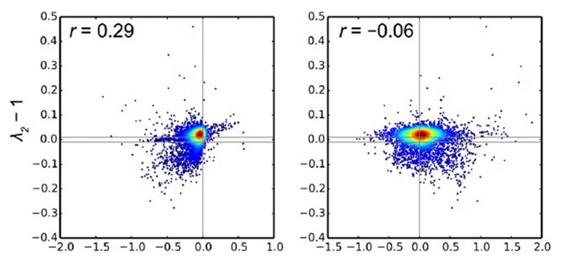 First-principles screening of structural properties of intermetallic compounds on martensitic transformation (金属间化合物马氏体相变结构性质的第一性原理高通量筛选)
First-principles screening of structural properties of intermetallic compounds on martensitic transformation (金属间化合物马氏体相变结构性质的第一性原理高通量筛选)
Joohwi Lee,Yuji Ikeda&Isao Tanaka Electronic structure;Metals and alloys
npj Computational Materials 3:52 (2017)
doi:10.1038/s41524-017-0053-8
Published online:24 November 2017
Abstract| Full Text | PDF OPEN
摘要:形状记忆合金(SMA)的功能稳定性,需要母体相和马氏体相具有良好兼容性的马氏体相变。本研究系统地探讨了基于第一原理的材料筛选方法,通过考察能量稳定性、动力学稳定性以及与母体相的结构兼容性,来研究具有马氏体相的金属间化合物。B2、D03和L21晶体结构被认为是母体相,而2H和6M结构被认为是马氏体相。我们研究了有特定化学计量组成比的二元合金3384种、三元合金3243种,并从中筛选出187种符合条件的SMA马氏体相变合金。其中一些合金的构成元素是已广泛使用于SMA的化学元素,但在筛选出的合金中却还发现了多种SMA中未曾出现过的其他金属元素。对这些合金的能量稳定性与材料工程数据库(Materials Project Database,MPD)中的数据作了进一步的比对分析,并检查了这些马氏体结构是否可引起后续的相分离或演变为其它结构的可能性。
Abstract:Martensitic transformation with good structural compatibility between parent and martensitic phases are required for shape memory alloys (SMAs) in terms of functional stability. In this study, first-principles-based materials screening is systematically performed to investigate the intermetallic compounds with the martensitic phases by focusing on energetic and dynamical stabilities as well as structural compatibility with the parent phase. The B2, D03, and L21 crystal structures are considered as the parent phases, and the 2H and 6M structures are considered as the martensitic phases. In total, 3384 binary and 3243 ternary alloys with stoichiometric composition ratios are investigated. It is found that 187 alloys survive after the screening. Some of the surviving alloys are constituted by the chemical elements already widely used in SMAs, but other various metallic elements are also found in the surviving alloys. The energetic stability of the surviving alloys is further analyzed by comparison with the data in Materials Project Database (MPD) to examine the alloys whose martensitic structures may cause further phase separation or transition to the other structures.
Editorial Summary
Shape memory alloys: screening from first principles (形状记忆合金:采用第一原理的高通量筛选)
通过第一性原理的方法来高通量筛选新型形状记忆合金的金属间化合物,可为进一步的研究提供更多可能性。来自日本京都大学的Isao Tanaka教授等采用第一原理方法,筛选了六千多种具有特定化学计量组合的潜在形状记忆马氏体相变合金。以现有形状记忆合金的性能为依据,确定了高通量的筛选规则,即确定了该材料的工作温度范围和可逆性条件。他们通过以上准则发现有187种合金在母体相和马氏体相之间显示出结构兼容的马氏体相变,并具有稳定的马氏体相。在已知的形状记忆合金中,这187种合金是全新的体系,其中有些体系中含有不太可能成为形状记忆合金的组成元素,如锂元素。该计算研究有可能为寻找有形状记忆效应的潜在合金组合开辟新的途径。
Computationally screening intermetallic combinations for new shape memory alloys can highlight viable options for further investigation. A team led by Isao Tanaka from Kyoto University in Japan screened more than six thousand alloys with stoichiometric combinations for potential shape memory martensite transformation using first-principles. By using existing shape memory alloys to determine screening criteria for working temperature and reversibility of the shape memory effect, they found 187 alloys that show structurally compatible martensitic transformation between the parent and the martensite phase and a stable martensite phase. Of these 187 alloys, none are existing shape memory alloys (as they are not stable enough), and many unlikely elements such as lithium emerge as potential constituent elements. Computational studies may therefore open new avenues for potential alloy compositions showing the shape memory effect.


 沪公网安备 31010502006565号
沪公网安备 31010502006565号